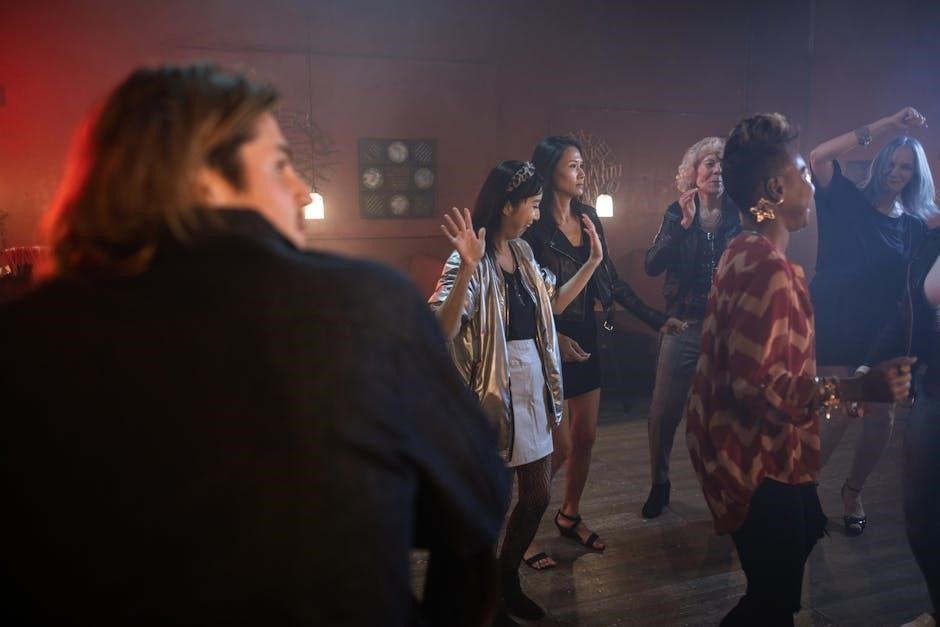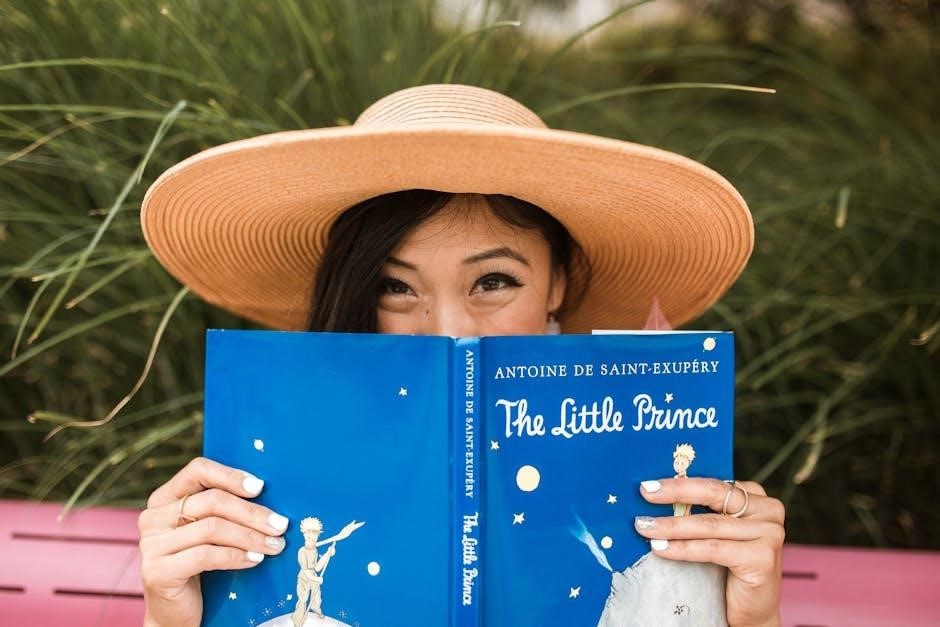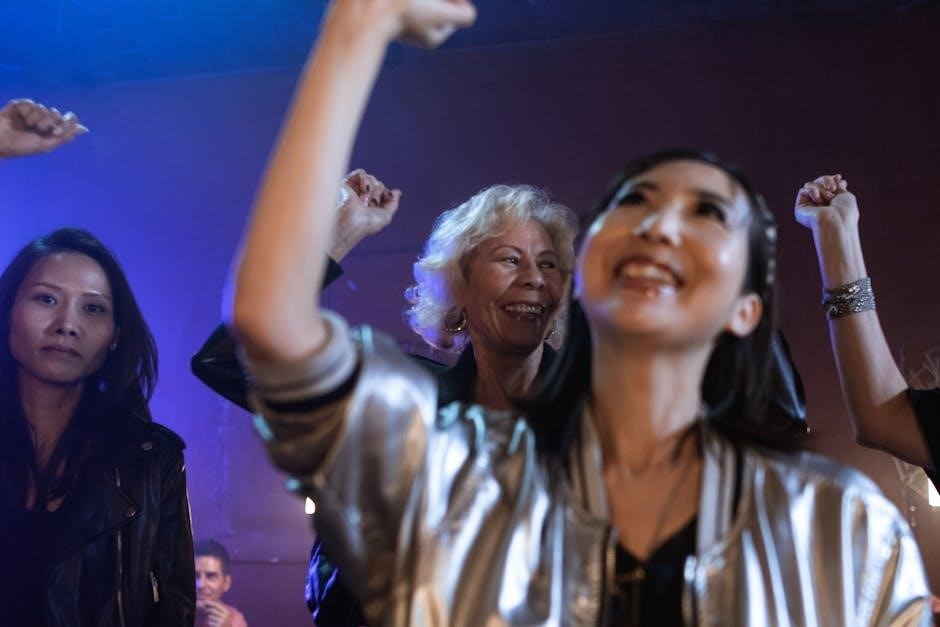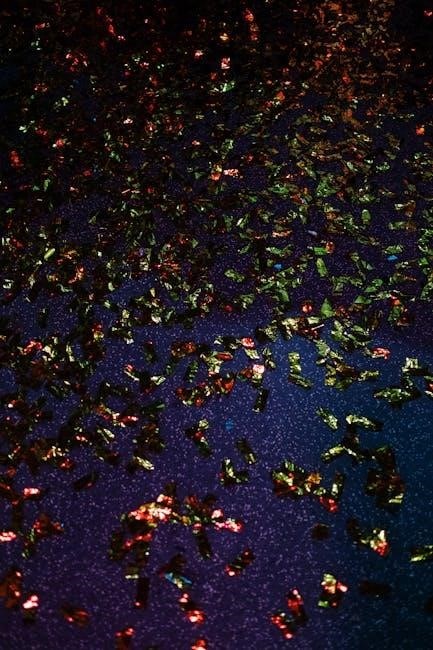The Joy Luck Club by Amy Tan is a poignant exploration of Chinese-American experiences, weaving intergenerational stories of love, loss, and cultural identity.
1.1 Overview of the Novel
The Joy Luck Club by Amy Tan is a poignant exploration of the lives of four Chinese immigrant mothers and their American-born daughters. Set primarily in San Francisco’s Chinatown, the novel delves into themes of identity, family, and cultural clashes. Founded by Suyuan Woo, the Joy Luck Club serves as a symbol of hope and resilience. Through interwoven narratives, the book explores the struggles of immigration, generational gaps, and the enduring bond between mothers and daughters, offering a rich tapestry of experiences shaped by love, loss, and tradition.
1.2 Author Background: Amy Tan
Amy Tan, born on February 19, 1952, in Oakland, California, is a renowned American author. Her experiences as a first-generation Chinese-American deeply influenced her writing. Tan grew up in a multicultural household, which shaped her exploration of identity and cultural duality. She initially pursued a career in linguistics and later worked in corporate communications before dedicating herself to writing. Her debut novel, The Joy Luck Club, was inspired by her complex relationship with her mother and her desire to bridge generational and cultural divides. Tan’s work has since become a cornerstone of Asian-American literature, celebrated for its emotional depth and authenticity.
1.3 Historical Context of Chinese Immigration
The novel is set against the backdrop of Chinese immigration to the United States, particularly during the mid-20th century. Many Chinese immigrants fled poverty, war, and political instability, seeking better opportunities in America. The Chinese Exclusion Act of 1882 and subsequent restrictive policies heavily impacted their experiences. These immigrants faced cultural isolation, racial discrimination, and the challenge of preserving their heritage while adapting to American life. Their journeys reflect resilience and sacrifice, themes central to The Joy Luck Club, as the mothers and daughters navigate identity and belonging in a new homeland.
Plot Summary
The Joy Luck Club explores the intricate relationships between four Chinese immigrant mothers and their American-born daughters, delving into cultural clashes, emotional connections, and shared histories.
2.1 The Founding of the Joy Luck Club
The Joy Luck Club was founded by Suyuan Woo during the Japanese invasion of China in World War II. In the war-torn city of Kweilin, Suyuan and three other mothers formed the club as a weekly gathering to maintain hope and joy amidst hardship. They shared food, played mahjong, and supported one another. After immigrating to America, Suyuan reestablished the club in San Francisco with three new friends, symbolizing resilience, friendship, and the enduring quest for joy in uncertain times.
2.2 The Structure of the Novel
The Joy Luck Club is structured into four main sections, each titled with mahjong terms: “Feathers,” “The Twenty-Six Mischiefs,” “Shadows,” and “Instructions for a Wishes.” Each section contains four interconnected stories, alternating between the mothers’ and daughters’ perspectives. This non-linear narrative weaves together past and present, blending memories of China with experiences in America. The structure highlights the generational and cultural gaps while emphasizing the universal themes of identity, family, and heritage, creating a rich tapestry of voices and emotions.
2.3 Key Plot Points and Interwoven Stories
The Joy Luck Club intertwines the lives of four Chinese immigrant mothers and their American-born daughters; Central plot points include the founding of the Joy Luck Club in China as a symbol of hope during hardship and its revival in America. The novel explores pivotal moments such as Jing-mei’s discovery of her half-sisters in China, Waverly’s struggles with cultural identity, and Rose’s journey toward self-acceptance. These interconnected narratives reveal the emotional distances and deep bonds between generations, showcasing the universal challenges of immigration, family, and belonging.

Major Characters
The novel focuses on four Chinese immigrant mothers—Suyuan, Lindo, Ying-ying, and An-mei—and their American-born daughters, Jing-mei, Waverly, Lena, and Rose, exploring their complex relationships and cultural identities.
3.1 The Mothers: Suyuan, Lindo, Ying-ying, and An-mei
The mothers in The Joy Luck Club—Suyuan, Lindo, Ying-ying, and An-mei—are complex, dynamic characters shaped by their immigrant experiences. Suyuan, the founder of the Joy Luck Club, embodies resilience and hope. Lindo, with her sharp wit and independence, navigates cultural expectations. Ying-ying, quieter and more mysterious, grapples with personal tragedy. An-mei, balancing strength and vulnerability, teaches her daughter about resilience. Together, they serve as bridges between their Chinese heritage and their American-born daughters, their stories revealing deep emotional layers and cultural tensions.
3.2 The Daughters: Jing-mei, Waverly, Lena, and Rose
The daughters—Jing-mei, Waverly, Lena, and Rose—represent the first generation of Chinese-Americans in the novel. Jing-mei, the narrator, struggles with her identity and her mother’s expectations. Waverly, a chess prodigy, faces pressure to balance her achievements with cultural obligations. Lena, caught between her parents’ troubled marriage and her own insecurities, seeks validation. Rose, quiet and introspective, navigates her parents’ high hopes and her own sense of self-worth. Together, they embody the challenges of cultural assimilation and the pursuit of self-discovery.
3.3 The Significance of Male Characters
Male characters in The Joy Luck Club play pivotal roles in shaping the daughters’ identities and cultural conflicts. Cliff, Jing-mei’s husband, bridges cultural gaps, while Waverly’s ex-husband, Jim, and Lena’s husband, Harold, highlight generational divides. These characters often embody the tension between traditional values and modern American life. Their presence underscores the challenges of cultural assimilation and the daughters’ struggles to balance their heritage with their newfound identities, serving as foils to the strong, complex female characters who dominate the narrative.

Themes in The Joy Luck Club
The novel explores themes of mother-daughter relationships, cultural identity, generational gaps, and the clash between tradition and modernity, reflecting the immigrant experience in America.
4.1 Mother-Daughter Relationships
The Joy Luck Club deeply explores the complex bond between mothers and daughters, highlighting tensions, love, and misunderstandings. The immigrant experience intensifies these relationships, as mothers hold onto traditions while daughters embrace American culture. Sacrifices and expectations often lead to conflict, yet the underlying connection remains unbreakable. Characters like Suyuan and Jing-mei illustrate this dynamic, showcasing how memories and unspoken emotions shape their interactions. The novel ultimately reveals the struggle for understanding and acceptance between generations, emphasizing the universal challenges of family relationships and cultural identity.
4.2 Cultural Identity and Generational Gaps
The Joy Luck Club explores the tension between cultural identity and generational divides, particularly between Chinese immigrant mothers and their American-born daughters. The mothers cling to traditions and values from their homeland, while the daughters navigate their identities in a new cultural landscape. This clash reflects the struggles of preserving heritage versus embracing modernity; The novel highlights how language barriers, differing values, and unspoken expectations create misunderstandings, yet also reveal the deep-rooted connections between generations striving to understand one another.
4.3 The American Dream and Immigration Challenges
The Joy Luck Club delves into the complexities of the American Dream and the struggles faced by Chinese immigrants. The mothers, having fled hardship in China, seek better lives for their children in America. However, they encounter cultural barriers, language difficulties, and the challenge of balancing tradition with assimilation. Their American-born daughters often grapple with their mothers’ expectations, feeling the weight of sacrificed dreams. The novel portrays the tension between pursuit of opportunity and the sacrifices made to achieve it, highlighting the resilience and enduring hope of immigrant families.
4.4 Tradition vs. Modernity
The Joy Luck Club explores the clash between tradition and modernity through the experiences of Chinese immigrant mothers and their American-born daughters. The mothers cling to cultural practices like mahjong and traditional values, while their daughters embrace Western ideals and individuality. This tension reflects the struggle to preserve heritage in a rapidly changing world. Amy Tan illustrates how cultural identity is negotiated across generations, highlighting the friction and understanding that arise from these differing perspectives. Tradition and modernity coexist, shaping the characters’ identities and relationships.

Symbolism in the Novel
The Joy Luck Club, mahjong, and food are central symbols, representing cultural heritage, luck, and the bonds between mothers and daughters, while also highlighting generational divides.
5.1 The Joy Luck Club as a Symbol
The Joy Luck Club symbolizes hope, resilience, and cultural preservation. Founded by Suyuan Woo during wartime, it represents the mothers’ shared experiences and their desire to maintain Chinese traditions in America. The club embodies their collective strength and the enduring bond between generations. It also serves as a bridge between their past and present, symbolizing the immigrant journey and the pursuit of a better life. Through the club, the mothers pass down values and stories, ensuring their heritage lives on despite generational and cultural divides.
5.2 The Significance of Mahjong
Mahjong in The Joy Luck Club serves as a cultural and symbolic thread, weaving together tradition, community, and generational bonds. The game represents strategy and luck, mirroring the mothers’ resilience in navigating life’s uncertainties. It is a space for storytelling and emotional connection, where the mothers share their experiences and support one another. Mahjong also highlights the tension between tradition and modernity, as the daughters struggle to understand its significance. Ultimately, it symbolizes the enduring power of cultural heritage in bridging generational and cultural divides.
5.3 The Role of Food and Feasts
Food in The Joy Luck Club symbolizes tradition, love, and cultural identity. Feasts bring the characters together, fostering a sense of community and shared history. Through cooking, the mothers express their care and pass down traditions to their daughters. However, the daughters’ indifference highlights generational gaps. Meals also serve as settings for storytelling and emotional bonding, enriching the narrative with layers of meaning and memory, ultimately reflecting the characters’ complex relationships and cultural heritage.

Literary Devices
Amy Tan employs flashbacks, multiple narratives, vivid imagery, and symbolic language to explore themes of identity and memory, enriching the novel’s emotional depth and complexity.
6.1 Use of Flashbacks and Memory
Amy Tan masterfully uses flashbacks and memory to weave the past into the present, revealing the mothers’ experiences in China and their journeys to America. These narrative devices bridge the generational gap, allowing daughters to understand their mothers’ sacrifices and resilience. Memories are often triggered by symbolic objects or moments, creating emotional depth and connecting the characters’ histories to their current lives. This technique enriches the storytelling, highlighting themes of identity, loss, and the enduring power of maternal love across time and culture.
6.2 Interweaving Narratives and Perspectives
In The Joy Luck Club, Amy Tan employs interweaving narratives to explore the complex relationships between mothers and daughters. The novel alternates between the perspectives of four Chinese immigrant mothers and their four American-born daughters, creating a rich tapestry of voices. This structure allows readers to experience both the sacrifices of the mothers and the struggles of the daughters, bridging cultural and generational divides. The interwoven stories highlight universal themes of identity, belonging, and the immigrant experience, while maintaining a cohesive and engaging narrative flow.
6.3 Imagery and Descriptions of Chinatown
Amy Tan vividly portrays Chinatown as a vibrant, almost magical world, filled with sensory details that evoke the sights, sounds, and smells of the community. Through rich imagery, she captures the bustling streets, colorful markets, and the blend of traditional and modern life. Chinatown serves as a symbol of cultural heritage and connection to the mothers’ past, while also highlighting the contrasts between the old and new worlds. This imagery creates a vivid backdrop for the characters’ experiences and underscores the novel’s themes of identity and belonging.

Critical Reception and Reviews
The novel received widespread acclaim for its heartfelt portrayal of mother-daughter relationships and cultural insights, becoming a bestseller and earning praise from critics and readers alike.
7.1 Initial Reception and Popularity
The Joy Luck Club debuted in 1989 to widespread critical acclaim and commercial success. Major publications like The New York Times praised its poignant exploration of cultural identity and family dynamics. The novel became a bestseller, resonating with readers for its universal themes despite its specific focus on Asian-American experiences. Its relatable storytelling and emotional depth helped it transcend cultural boundaries, making it a favorite among book clubs and readers worldwide. The novel’s success also earned it a Pulitzer Prize nomination, solidifying its place in contemporary literature.
7.2 Criticisms and Controversies
The Joy Luck Club faced criticism for its portrayal of Asian-American experiences, with some accusing it of perpetuating stereotypes. Critics argued that the novel oversimplified complex cultural dynamics and relied on tropes like the “tiger mother.” Additionally, some readers felt that male characters were underdeveloped and that the narrative focused too narrowly on mother-daughter relationships. Despite these criticisms, Amy Tan defended her work, stating it aimed to challenge, not reinforce, stereotypes. The debates surrounding the book highlighted the challenges of representing diverse voices in literature.
7.4 Academic Analysis and Scholarly Perspectives
Scholars have praised The Joy Luck Club for its nuanced exploration of cultural identity and mother-daughter relationships. Academic analyses often highlight Tan’s use of interwoven narratives to represent the complexities of immigration and generational gaps. The novel is frequently studied in literature and cultural studies courses, with scholars emphasizing its portrayal of the immigrant experience and the tension between tradition and modernity. Its rich thematic depth and layered storytelling have made it a cornerstone of Asian-American literary studies, offering insights into the universal struggles of cultural adaptation and family dynamics.

Adaptations and Media
The novel has been adapted into a 1993 film, audiobook versions, and stage plays, expanding its reach and impact across different media formats and audiences.
8.1 The Film Adaptation (1993)
The 1993 film adaptation of The Joy Luck Club, directed by Wayne Wang, brought Amy Tan’s novel to life, capturing its emotional depth and cultural richness. Starring Ming-Na Wen and France Nuyen, it explores the complex mother-daughter relationships and the immigrant experience. The film received mixed reviews but was praised for its cultural authenticity and visual storytelling. It grossed over $32 million, making it a significant milestone in Asian-American cinema. The adaptation remains a powerful interpretation of the novel, resonating with audiences and contributing to its lasting pop culture relevance.
- Directed by Wayne Wang.
- Highlighted themes of identity and heritage.
- Played a key role in diversifying Hollywood narratives.
- These resources are widely available on educational websites and libraries.
- They cater to both students and educators, promoting deeper engagement with the text.
8.2 Audiobook Versions
The audiobook versions of The Joy Luck Club offer a convenient way to experience Amy Tan’s storytelling. Narrators like Julia Cadabra and Nancy Wu bring the characters to life, capturing the emotional depth of the novel. Available on platforms like Audible, Google Play Books, and Apple Books, these versions are ideal for listeners on the go. The audiobooks range in duration, with most spanning around 12 hours, providing an immersive experience. They are also available in CD formats for those who prefer physical copies, ensuring accessibility for all types of listeners.
8.3 Stage Play Adaptations
The Joy Luck Club has been adapted into a stage play, bringing the novel’s emotional depth and cultural richness to theater audiences. The play, adapted by Susan Kim, premiered in 2007 at the Chicago Playworks. It captures the intricate relationships between mothers and daughters, exploring themes of identity and heritage. The production features multiple storylines interwoven, staying true to the novel’s structure. Performances have been praised for their authenticity and emotional resonance, making it a powerful medium to experience the story anew.

Educational Resources
9.1 Study Guides and Summaries
PDF versions of The Joy Luck Club often include study guides, summaries, and analysis to aid students in understanding the novel’s complex themes and characters.
9.2 Analysis of Themes and Characters
Educational resources provide in-depth analysis of mother-daughter relationships, cultural identity, and immigration challenges, enhancing comprehension for academic purposes.
9.3 Discussion Questions for Book Clubs
Many PDF editions offer discussion questions, fostering meaningful conversations about the novel’s cultural and emotional depth in classroom or book club settings.
Study guides for The Joy Luck Club provide detailed summaries, character analyses, and thematic explanations. These resources are ideal for students and book clubs, offering insights into the novel’s complex mother-daughter relationships and cultural themes. Many guides include discussion questions, essay prompts, and historical context about Chinese immigration. Digital versions, often in PDF format, are widely available, making it easy to access comprehensive analyses of Amy Tan’s work. These tools help readers deepen their understanding of the novel’s emotional depth and cultural significance.
The Joy Luck Club explores profound themes through its intricate characters. Mother-daughter relationships are central, revealing tensions between cultural heritage and personal identity. The mothers, shaped by their Chinese past, struggle to connect with their American-born daughters, who seek independence. Themes of sacrifice, love, and misunderstanding are woven throughout. Characters like Jing-mei and Suyuan embody the generational divide, while others, such as Lindo and Waverly, illustrate resilience and adaptation. The novel’s structure, with overlapping narratives, deepens the emotional complexity, offering a rich tapestry for analysis.
How do the mothers’ experiences in China shape their relationships with their American-born daughters?
What role does the Joy Luck Club play in preserving cultural traditions and bonding?
How do the daughters navigate their identities between Chinese heritage and American culture?
What significance does mahjong hold beyond being a game in the novel?
How do the interwoven stories contribute to the overall themes of the book?
What lessons can be drawn from the struggles of cultural assimilation?
How does food serve as a symbol of love, conflict, and connection?
What message do you think Amy Tan conveys about mother-daughter communication?
How does the novel portray the challenges of immigration and the pursuit of the American Dream?
What impact does the novel have on your understanding of Asian-American experiences?
Availability and Formats
The Joy Luck Club is widely available in various formats, including PDF, eBook, paperback, and hardcover. Digital copies can be purchased on platforms like Amazon or Google Books, while libraries often offer free access. Paperback and hardcover editions are popular for personal collections, and audiobook versions provide an alternative for listeners. Additionally, some websites offer free PDF downloads, though purchasing from authorized sources is recommended to support the author and publisher.

10.1 PDF Versions and Digital Copies
The Joy Luck Club is widely available in digital formats, including PDF versions, making it accessible to readers worldwide. Platforms like Google Books, Amazon Kindle, and Barnes & Noble Nook offer digital copies for purchase or download. Some websites may provide free PDF versions, though users should be cautious about copyright compliance. Digital copies allow readers to access the novel on multiple devices, enhancing portability and convenience. This format has contributed to the book’s enduring popularity, ensuring its reach to modern audiences while preserving its timeless themes.
10.2 Hardcover, Paperback, and Kindle Editions
The Joy Luck Club is widely available in various formats, catering to different reader preferences. Hardcover editions offer a durable, high-quality reading experience, while paperback versions provide affordability and portability. Kindle editions enable digital access, with features like adjustable font sizes and easy navigation. All formats are accessible through major online retailers, bookstores, and digital platforms, ensuring readers can choose their preferred way to engage with the novel. This versatility has contributed to the book’s enduring popularity and accessibility.
10.3 Libraries and Free Access Options
The Joy Luck Club is widely available in libraries, offering free access to readers. Many public and academic libraries carry physical copies, e-books, and audiobooks through services like OverDrive or Libby. Additionally, some libraries provide free PDF versions or digital loans, making the novel accessible to students and researchers. Borrowing options vary by location, but libraries remain a reliable source for exploring this timeless story without purchase. Check your local library or institution for availability and formats to enjoy Amy Tan’s masterpiece.

Cultural Impact
The Joy Luck Club significantly impacted Asian-American representation, breaking stereotypes and inspiring future authors. Its exploration of cultural identity resonated broadly, influencing literature and pop culture deeply.
11.1 Representation of Asian-Americans
The Joy Luck Club significantly advanced the representation of Asian-Americans in literature, offering authentic portrayals of their experiences. Amy Tan’s novel was among the first to bring Asian-American stories into the mainstream, highlighting the complexities of cultural identity and mother-daughter relationships. By humanizing Asian characters and exploring their unique struggles, the book challenged stereotypes and provided a voice for a previously underrepresented community. Its success paved the way for future Asian-American authors and remains a celebrated milestone in diversifying American literature.
11.2 Influence on Subsequent Asian-American Literature
Amy Tan’s The Joy Luck Club has profoundly shaped Asian-American literature, inspiring a wave of authors to explore themes of cultural identity, family dynamics, and the immigrant experience. Its success paved the way for writers like Celeste Ng and Min Jin Lee, who continue to delve into similar narratives. The novel’s impact encouraged publishers to seek out Asian-American voices, fostering a richer literary landscape. Its influence is evident in the growing body of work addressing the complexities of cultural heritage and generational divides.
11.3 The Novel’s Role in Pop Culture
The Joy Luck Club has left an indelible mark on pop culture, inspiring countless references in TV shows, films, and music. Its exploration of identity and cultural clashes resonates widely, making it a frequent topic in media discussions. The novel’s themes have influenced artists and writers, with many drawing inspiration from its nuanced portrayal of Asian-American experiences. Its impact extends beyond literature, cementing its place as a cultural touchstone that continues to shape modern storytelling and representation.
Legacy and Anniversary Editions
The Joy Luck Club’s legacy endures with anniversary editions, including a 30th-anniversary release featuring a new foreword by Amy Tan, celebrating its timeless appeal and cultural impact.
12.1 Celebrating the Novel’s Anniversary
The anniversary of The Joy Luck Club has been celebrated with special editions and tributes, honoring its enduring impact. Fans and scholars commemorate the novel’s publication with events, discussions, and reflections on its cultural significance. Limited editions, often featuring forewords by Amy Tan or introductions by scholars, have been released to mark milestones. These celebrations highlight the novel’s role in shaping Asian-American literature and its continued relevance in modern society. The anniversary serves as a reminder of the novel’s timeless themes and its lasting influence on readers worldwide.
12.2 Re-release and Special Editions
The Joy Luck Club has seen several re-releases, including special editions celebrating its anniversary. A 30th-anniversary edition was published, featuring a foreword by Amy Tan and additional insights into her writing process. These editions are available in various formats, including hardcover, paperback, and digital versions like PDF. Special editions often include bonus content, such as author interviews or essays, enhancing the reader’s understanding of the novel. Fans and scholars alike appreciate these re-releases for their unique perspectives and collectible value.
12.3 Continued Relevance in Modern Times
The Joy Luck Club remains a poignant and relevant novel in modern times, as its exploration of identity, cultural heritage, and family dynamics continues to resonate with readers. The digital availability of the novel, including PDF versions, has introduced it to new generations, ensuring its themes of resilience and intergenerational understanding stay alive. Its portrayal of the immigrant experience and the struggle to balance tradition with modernity continues to inspire discussions about diversity and inclusion in contemporary society.
